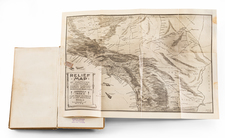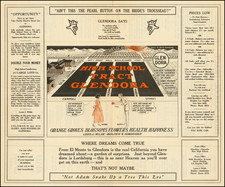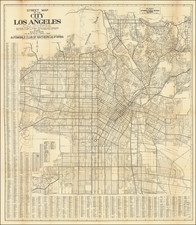Early Knotts Berry Farm Promotional Material
A brochure created to promote Knott's Berry Farm sometime in the early 1950s before the construction of the amusement park and the addition of Marion Speer's Western Trails Museum. At this time, Knott's Berry Farms was still in its infancy, with the only attraction being the Western-themed Ghost Town. This map shows a smaller version of the park with dedicated illustrations for every building and attraction, notably the iconic berry stand and cable cars that moved guests throughout the park. The map also shows the park's first rides: the Ghost Town & Calico Railway and a Merry-go-round.
Above the map are depictions of Western-themed characters, referencing some of the staff who wore period attire in the ghost town area. Below these figures is a nice portrait of Walter Knott, the creator and operator of the park.
The next image contains detailed illustrations of the 33 "intriguing shops" that make up Knott's Berry Farm. These illustrations feature a nice drawing of the facade of the shop accompanied by a description of the location. This image also shows an early rendition of the park's logo, which features a well-dressed prospector leaning against a signpost for Knott's Berry Farm while a mule laden with supplies stands behind him.
Knotts Berry Farm
The Knott's Berry Farm originated from a berry farm owned by Walter Knott (1889–1981). In the 1920s, Knott and his wife, Cordelia, sold berries, preserves, and pies from a roadside stand beside State Route 39, near the small town of Buena Park, California.
In 1934, amid the Great Depression, Knott's wife Cordelia (1890–1974) began serving fried chicken dinners on their wedding china. For dessert, Knott's signature Boysenberry Pie was also served to guests dining in the small tea room. As Southern California developed, Highway 39 became the major north-south connection between Los Angeles County and the beaches of Orange County. The restaurant's location soon became a popular stopping point for drivers making the two-hour trip in those days before freeways.
As time went on, more shops and interactive displays were opened to entertain patrons waiting for a seat at the Chicken Dinner Restaurant. The Berry Market expanded South from Mrs. Knott's Chicken Dinner Restaurant along Grand Ave. Wishing wells, rock gardens, miniature waterfalls, water wheels, and a replica of George Washington's Mount Vernon fireplace were just some of the additions made in this expansion.
Before long, the Knotts had added Virginia's Gift Shop and several more shops and attractions such as a 15-million-year-old petrified log, a thirteen-foot diameter cross-section of coastal redwood cut at age 750 years, a visible bee-hive and an oxcart, with several wagons provided additional photo opportunities. The entire operation would soon be renamed Knott's Berry Place.
Walt built a 12-foot-tall volcano of lava rock trucked in from the Pisgah Crater in the Mojave Desert and equipped it with a boiler that rumbled, hissed, and spit steam at the push of a button. From the West side of the volcano, guests could enter a mine shaft following a vein of gold down into a large open pit and the Pan-for-Gold activity where customers could buy a ticket to pan for real gold to take home in a vial. Nearby the gold mine shaft entrance, the prospector's mule would haul a stone around an Arrastra, a circular ore grinding pit filled with gold-bearing quartz to release its gold.
Knott always had an affinity for the Old West which would only grow as his park did. With the post-war economic boom of the late 1940s and 1950s Knott's Berry Farms became an increasingly frequented attraction from locals and visitors alike. Knott was able to expand his park due to this increase in visitors, gradually adding attractions and features to the park. These included the Marion Speer's Western Trails Museum and the Timber Mountain Log ride.
Walter and Coredelia Knott continued to operate the theme park until 1974 when Coredelia died. Walter turned much of his attention to political activism, but still contributed to the expansion of Knott's Berry Farms. Walter died in 1981 and his children took over the business. The Knott family would continue park operations until 1997 when Knott's Berry Farms was sold to Cedar Fair Parks.












![[ Norma Triangle / West Hollywood / Sunset Strip / Santa Monica Blvd ] Map of West Knoll Los Angeles County, California](https://storage.googleapis.com/raremaps/img/small/97769.jpg)

![Pasadena [with] Southern California](https://storage.googleapis.com/raremaps/img/small/99025.jpg)

![[Southern California Views] Delightful Southern California, The Land of Sunshine and Bloom](https://storage.googleapis.com/raremaps/img/small/74862.jpg)